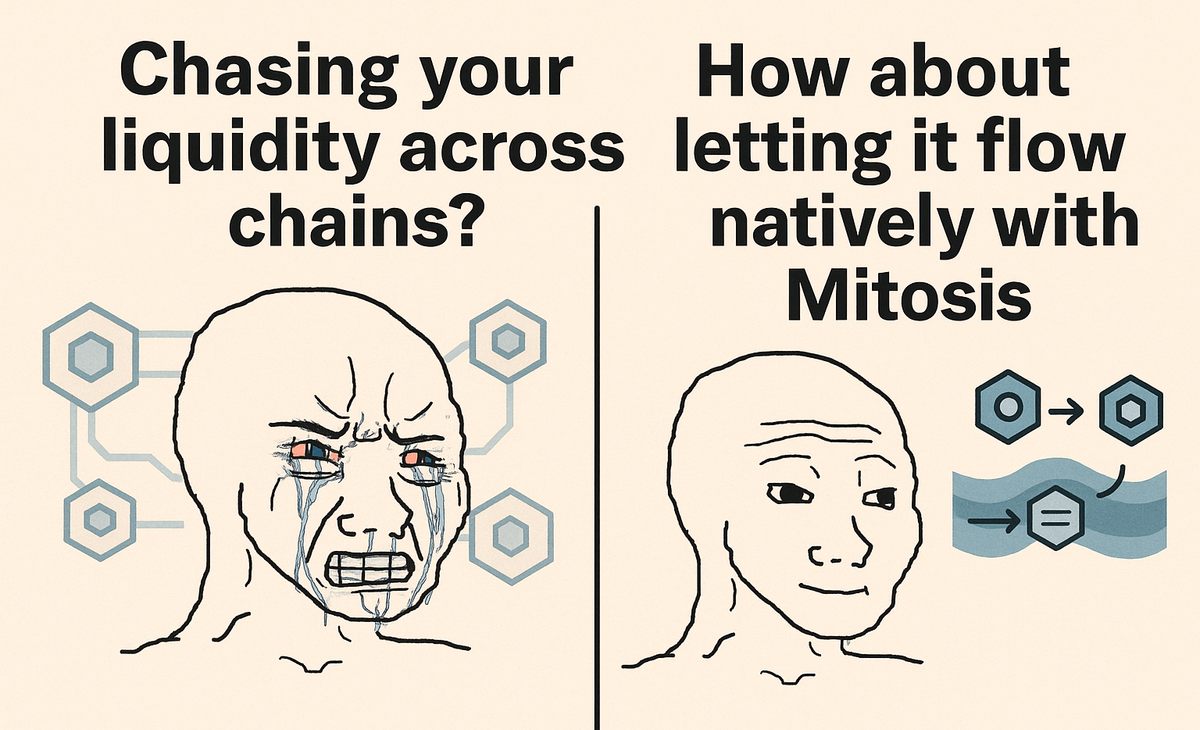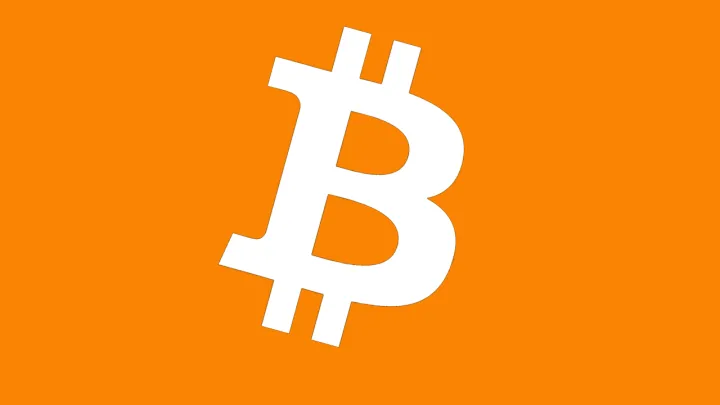Mitosis Is Building the Cross-Chain Liquidity Engine of DeFi

Introduction: The Big Liquidity Problem in DeFi
DeFi (Decentralized Finance) has come a long way. We’ve seen massive growth in smart contracts, decentralized exchanges, lending protocols, and yield farms. But even with all this progress, one major problem still holds the ecosystem back: cross-chain liquidity.
If you’ve ever tried to move tokens between blockchains or farm yield on different networks, you already know how painful it is. You’re stuck bridging assets manually, paying high gas fees, switching wallets, and risking delays or errors along the way. This is because most DeFi protocols are built on isolated chains, and they don’t talk to each other smoothly.
In simple terms: liquidity is stuck in silos, and users are forced to jump through hoops just to move their money around.
That’s where Mitosis comes in.
Mitosis is building the cross-chain liquidity engine DeFi has always needed a system that lets liquidity flow freely between chains, with no bridges, no lockups, and no stress.
Let’s break it down.
What Is Mitosis, in Simple Words?
Mitosis is a DeFi protocol that connects different blockchains and lets users move liquidity across them without the usual complications.
Think of it like a liquidity router. Instead of being locked into one chain (like Ethereum, Arbitrum, or Solana), Mitosis gives users access to multiple chains through one simple interface.
You deposit once, and you can:
- Swap assets across chains
- Earn yield from different ecosystems
- Move funds to where opportunities are
- All without needing to bridge anything manually
It’s like giving your liquidity a passport and letting it travel wherever it’s needed automatically and securely.
Why Cross-Chain Liquidity Matters So Much
Most DeFi users don’t stick to just one blockchain. You might hold some ETH on Ethereum, some stablecoins on Arbitrum, and maybe explore Solana or Cosmos. But here’s the catch:
- Bridges are risky — Many high-profile bridge hacks have led to massive losses.
- Moving money takes time — You wait for confirmations, you pay fees, and sometimes the UI breaks.
- Opportunities are missed — If yield is better on another chain, you’re too late by the time you move funds.
This creates a fragmented experience. Even though DeFi is “decentralized,” it’s not unified.
Mitosis solves that by making liquidity programmable and chain-agnostic. You don’t need to think about which chain you’re on. You just interact with Mitosis, and it handles the rest.
It’s like a DeFi superpower.
How Mitosis Works Behind the Scenes
Let’s simplify the tech side.
Mitosis is made up of a few core components:
1. Matrix Vaults
These are smart contract-based vaults where users deposit assets. Once deposited, your assets become programmable. That means they can be moved, swapped, or staked across chains automatically.
Think of Matrix Vaults as smart liquidity containers that:
- Let you earn passive yield
- Route your funds to the best opportunities
- Work across chains without needing your input
2. miAssets
When you deposit tokens into Mitosis, you receive “miAssets” in return. These are 1:1 representations of your deposited tokens inside the system. They make your liquidity portable.
For example:
- Deposit USDC → Get miUSDC
- Deposit ETH → Get miETH
These miAssets are what Mitosis uses to move your liquidity across chains in a secure and flexible way.
3. Cross-Chain Settlement Layer
Instead of using traditional bridges, Mitosis uses its own cross-chain settlement architecture that’s built for safety and efficiency.
It leverages fast messaging systems, secure proof mechanisms, and decentralized validators to ensure that when your liquidity moves from one chain to another, it’s done right with full transparency and no risk of loss.
The Mitosis Experience: What Users Actually Do
You don’t need to know all the tech to benefit from Mitosis. Here’s what the real experience looks like:
- You deposit into a Matrix Vault.
Say you put in 1,000 USDC on Ethereum. - You receive miUSDC.
This token is your passport to the multi-chain world. - You can now use this miUSDC across chains.
- Stake it in yield farms
- Trade it across networks
- Withdraw it on any supported chain when needed
- Mitosis handles the routing.
You don’t need to bridge, wait, or switch interfaces. Mitosis does all the work for you.
It’s one deposit, endless possibilities.
What Makes Mitosis Different from Other Cross-Chain Solutions?
There are other protocols trying to fix cross-chain liquidity, but here’s how Mitosis stands out:
- No Bridges, No Wrapping
Most protocols wrap tokens or use bridges. Mitosis does neither. Your liquidity stays native and is moved via a purpose-built cross-chain layer.
- Programmable Liquidity
This is the big one. Mitosis treats your assets like code you can build, automate, and direct them without moving them manually.
- Composability Across Chains
DApps and developers can plug into Mitosis and build new products that work natively across chains. It’s not just for users, it’s for builders too.
- User Sovereignty
Your funds are always under your control. You can withdraw on any supported chain at any time. You don’t get locked in.
- Optimized Yield
Mitosis routes liquidity to where it earns the most, even if that’s on another chain. It gives you access to better opportunities without needing you to chase them.
Why This Matters for the Future of DeFi
DeFi is becoming a multi-chain world. Ethereum is no longer the only home. We now have powerful ecosystems on:
- Layer 2s like Arbitrum, Optimism, Base
- Alt L1s like Solana, Avalanche, Sei, and more
- Rollups and Appchains for specific use cases
If DeFi is going to scale, liquidity needs to flow like water between all these places.
Mitosis is the protocol that makes that possible.
Just like how Uniswap made it easy to trade tokens without order books, Mitosis is making it easy to move liquidity without bridges or friction.
What This Unlocks: Use Cases for Users and Builders
Here’s what becomes possible with Mitosis live and scaled:
Yield Farmers
You no longer need to manually bridge USDC to Arbitrum just to farm yield. Deposit once into Mitosis and let it auto-route your funds to the highest APY.
Traders
Want to take advantage of a trading opportunity on another chain? Do it instantly with your miAssets, no bridging delay.
Builders
You can build DeFi apps that work natively across multiple chains using the Mitosis SDK. Imagine one lending market, one DEX, or one vault system that works on all major chains seamlessly.
Stablecoin Issuers
Imagine issuing a stablecoin that’s instantly usable on any chain without complex mint/burn systems.
DAOs and Protocols
Manage treasury across multiple chains easily. Move liquidity where it's needed most, automatically.
Mitosis Is Not Just a Product, It’s an Engine
Think of Mitosis like the engine inside a car. You might not see it, but it powers everything.
Mitosis is not trying to be a flashy DEX or a farming app. It’s focused on being the invisible infrastructure that makes cross-chain DeFi smooth, safe, and scalable.
It’s building the backend that other protocols and apps can plug into. The Matrix Vaults, the cross-chain messaging, the liquidity routing all of it forms a liquidity operating system for the multi-chain future.
That’s why the word “engine” is perfect. Engines make things move. Mitosis makes liquidity move.
The Mitosis Vision: Liquidity Without Limits
Mitosis is aiming for a world where:
- Users don’t need to care about what chain they’re on.
- Yield opportunities are accessible instantly, everywhere.
- Liquidity becomes modular, composable, and programmable.
- Builders can build once and deploy everywhere.
- DeFi stops being fragmented and becomes fluid.
That’s the future Mitosis is creating, and it’s doing it by solving the hardest part of DeFi: cross-chain liquidity.
Conclusion: A Cross-Chain Future Needs a Cross-Chain Engine
The biggest unlock in the next phase of DeFi won’t come from more yield farms or DEXes. It’ll come from making liquidity truly mobile, able to move between chains without delay, risk, or complexity.
That’s the missing layer Mitosis is building.
Mitosis is not just another DeFi app. It’s the cross-chain liquidity engine DeFi has been waiting for. One deposit, every chain. One interface, endless access. One protocol, unlimited potential.
If DeFi is going to grow into a global financial system, it needs an engine.
Mitosis is that engine.



Comments ()